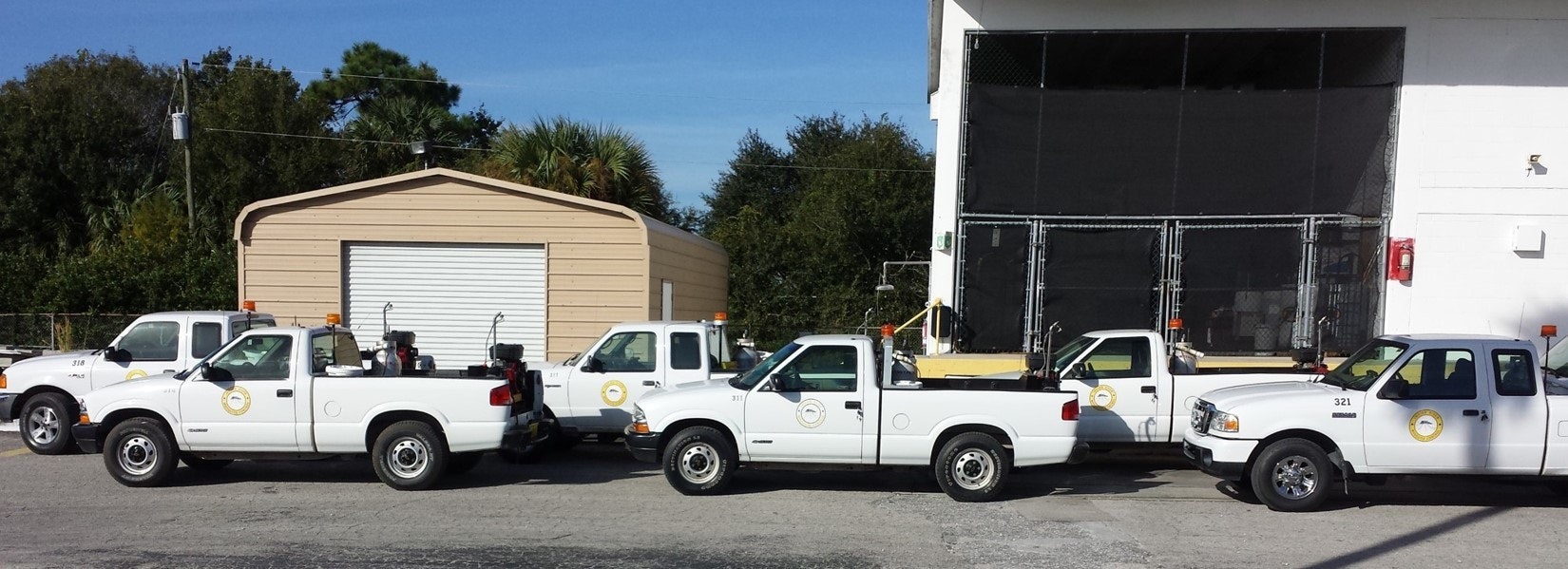Adulticiding
Adulticiding is the application of chemicals to kill adult mosquitoes by ground or air and is most effective when the mosquitoes are in flight. While source reduction and larviciding are typically the most effective control techniques, adulticiding is an extremely important part of any Integrated Pest Management (IPM) program.
The District uses truck-based applications as our primary adulticiding control method. The application is an Ultra-Low Volume (ULV) spray where small amounts of undiluted pesticide are dispersed by truck-mounted equipment. The volume of pesticide is computer-controlled to provide the same amount per mile regardless of vehicle speed. The trucks are equipped with a GPS guidance system that directs the driver and tracks the amount of pesticide applied, vehicle speed, and location.
ULV truck applications are conducted after sunset, when most mosquitoes are active, and the spray is most effective. Conducting treatments at night also reduces the risk of harming beneficial insects that are active during the daytime.
Adulticide treatments are determined on a day-to-day basis when surveillance has indicated that mosquito levels justify the need for spraying and are per state criteria.
During widespread mosquito outbreaks or a medical emergency when there exists a threat to the public of mosquito-transmitted pathogens such as St. Louis encephalitis, West Nile, or Zika, IRMCD contracts with a company specializing in aerial adulticide spraying for the application of Dibrom (naled).

